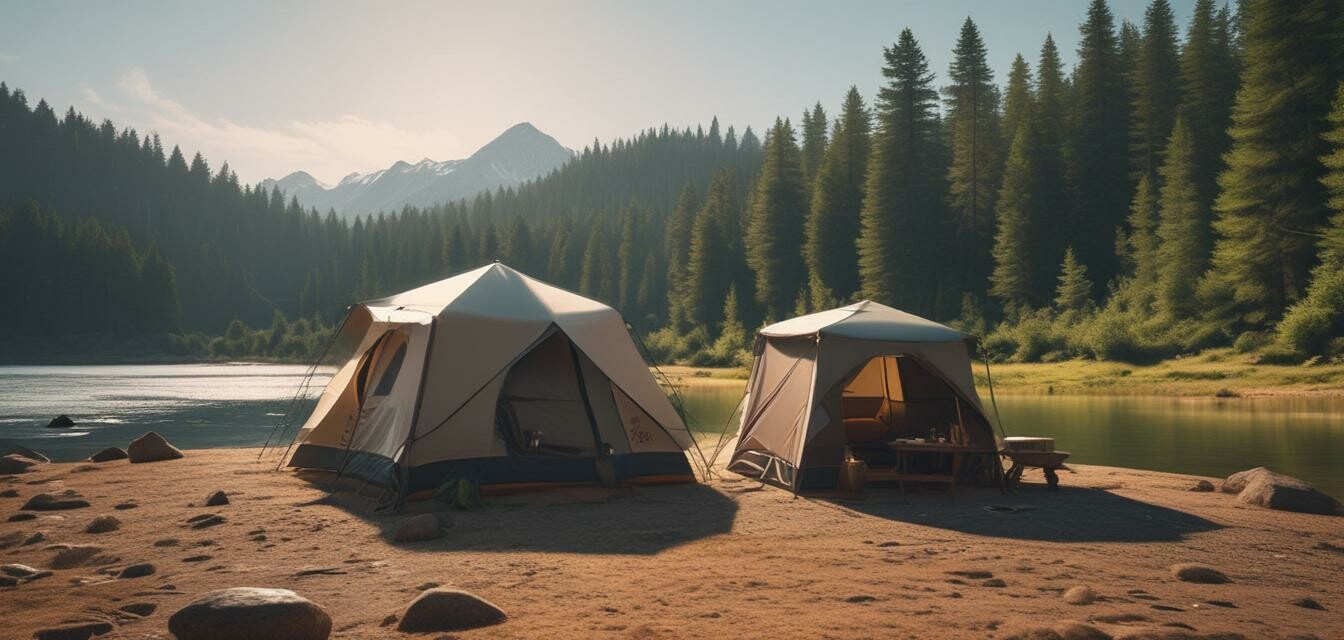
Setting Up Camp: Tips for Finding the Ideal Campsite
- Choose a site that is flat and well-drained.
- Avoid proximity to water sources for safety reasons.
- Look for natural windbreaks to protect against strong winds.
- Check local regulations and guidelines regarding camping.
- Leave no trace: always clean up after your stay.
Setting up a campsite is a vital part of the camping experience. With the right preparation, selecting the perfect spot can greatly enhance your outdoor adventures. In this article, we will provide guidance on best practices for finding and setting up a campsite that is both safe and comfortable, thus enhancing your overall experience in nature.
Understanding the Importance of Location
The location of your campsite can make a significant difference in your outdoor experience. Here are a few factors to consider that can help you choose the right spot:
| Factor | Why it Matters |
|---|---|
| Proximity to water | Useful for cleaning and cooking but may be damp and attract insects. |
| Sunshine/Shade | Essential for warmth and drying gear; too much shade can keep it cold. |
| Wind direction | Windbreaks can protect your tent; positioning can help avoid smoke in your face. |
| Elevation | Avoid low spots that may collect water during rain. |
Safety Considerations When Choosing a Campsite
Safety should always be a priority. Here are some tips to ensure that your campsite is safe:
- Choose a site away from dead trees or branches that might fall.
- Set up at least 200 feet from water sources to protect wildlife.
- Avoid areas prone to flooding or landslides.
- Ensure that the site is away from trails to minimize disturbing wildlife.
Setting Up Your Tent and Gear
Once you've chosen your campsite, it's time to set up your tent and gear. Follow these tips for a smooth setup:
Beginner's Section: Tips for Setting Up Your Tent
- Clear the area of rocks and debris before pitching your tent.
- Smooth, level ground allows for a comfortable sleeping surface.
- Ensure proper ventilation by keeping the rainfly off if the weather allows.
- Use the tent stakes to secure your tent properly, especially in windy conditions.
Maintenance and Cleanliness
Keeping your campsite clean helps protect the environment and your health. Remember to:
- Store food at least 200 feet away from your sleeping area.
- Use a designated area for cooking.
- Dispose of waste properly and pack out what you pack in.
- Follow the principles of "Leave No Trace." For more information on these principles, visit our Camping Tips and Tricks page.
Enjoying Your Campsite
Once your camp is set up, take advantage of your surroundings. Here are some ideas:
- Gather firewood and prepare a campfire (where permitted).
- Explore nature trails available in the area.
- Engage in games and activities with your camping companions.
- Watch the stars at night away from city lights.
Conclusion
Finding and setting up the ideal campsite can lead to a memorable outdoor experience. By taking the time to choose wisely and preparing effectively, you can ensure your adventures in nature are enjoyable and safe. Remember to keep in mind the safety tips, environmental considerations, and basic practices mentioned throughout this article. For more camping tips that can help you on your next trip, check out our Camping Buying Guides.
Pros
- Enhanced comfort and safety when the right campsite is chosen.
- A well-organized setup improves the overall experience.
- Engaging in local nature activities adds to the adventure.
Cons
- Time-consuming to find the perfect site in crowded areas.
- Weather conditions can complicate campsite selection.